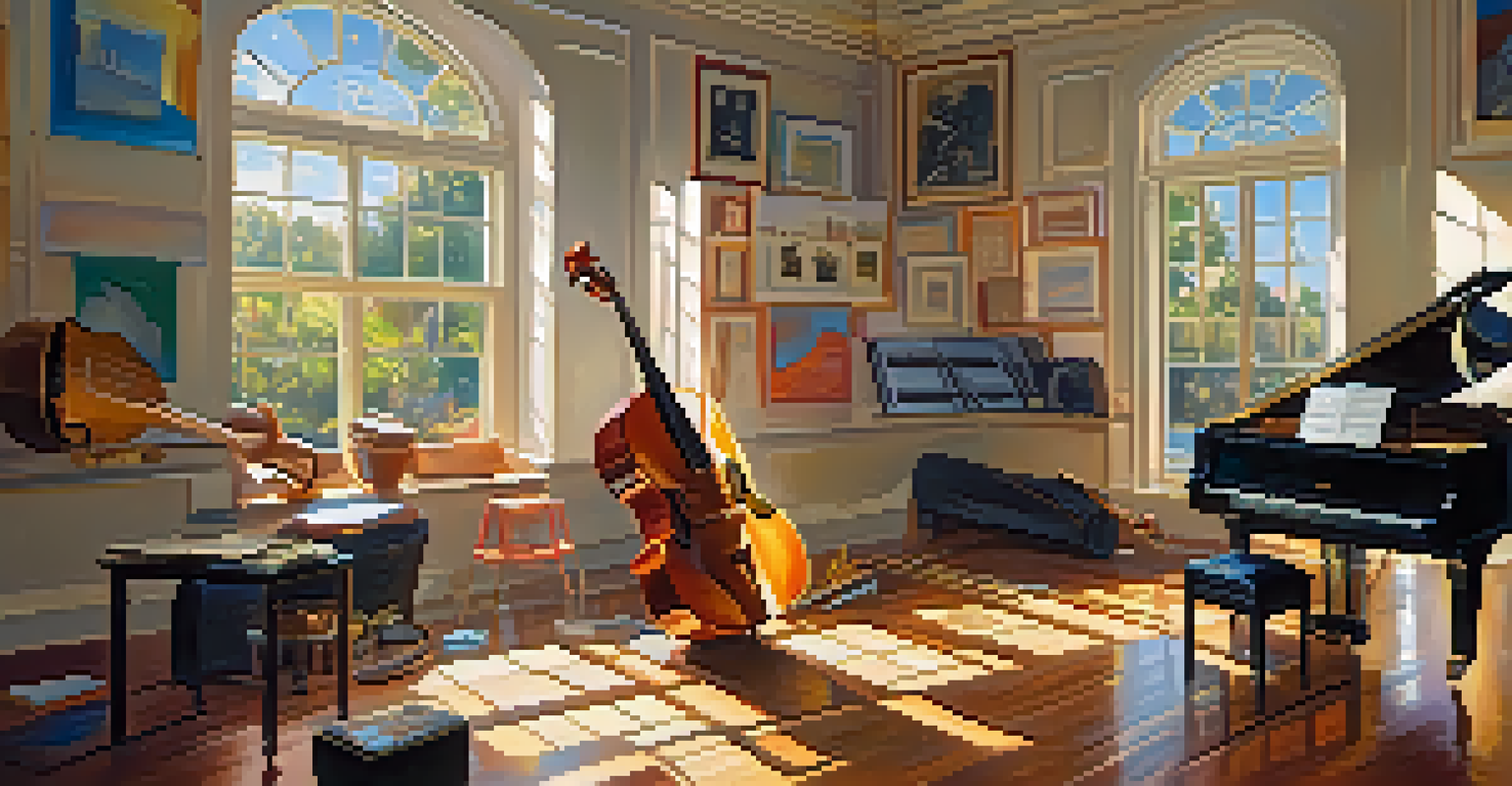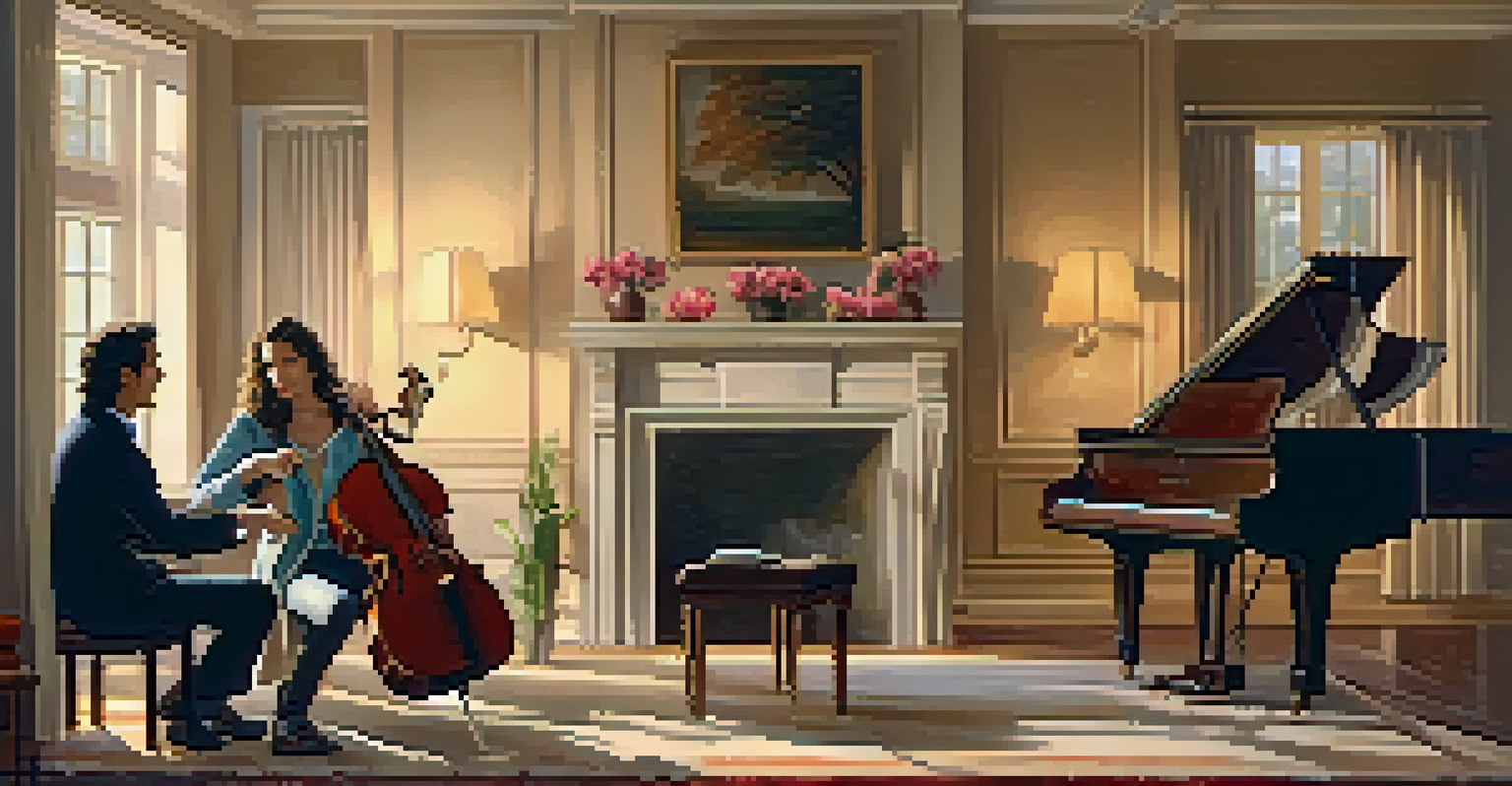Sight Reading Techniques for Pianists: Building Confidence

Understanding the Importance of Sight Reading for Pianists
Sight reading is a crucial skill for pianists that allows you to play music at first glance. This ability not only enhances your repertoire but also improves your overall musicianship. It's like being able to read a book without having to study it beforehand—imagine the freedom!
The beautiful thing about learning is that no one can take it away from you.
When you can sight read well, you can join in on group performances, accompany singers, or even play pieces that you’ve never seen before. This opens up a world of opportunities, making you a more versatile musician. Think of it as a key that unlocks doors to new musical experiences.
Moreover, practicing sight reading regularly builds your confidence. As you become more comfortable with reading notes and rhythms, you’ll find that your anxiety about playing in front of others diminishes. Confidence in music often translates to confidence in other areas of life, too!
Setting Realistic Goals for Your Sight Reading Practice
To build confidence in sight reading, it’s important to set achievable goals. Instead of aiming to master a complex sonata in one sitting, start with simpler pieces. This gradual approach allows for steady progress, making your practice sessions more enjoyable and less overwhelming.

Consider breaking your practice down into specific components, like focusing on reading only the right hand or the left hand first. By tackling smaller sections, you build a solid foundation. Each small success fuels your motivation and encourages you to keep going.
Sight Reading Enhances Musicianship
Developing sight reading skills allows pianists to play new pieces confidently and participate in various musical opportunities.
Remember, consistency is key. Whether it’s just 10 minutes a day or a longer session a few times a week, regular practice helps solidify your skills. Celebrate your achievements along the way, no matter how small—they all contribute to your growth as a pianist.
Incorporating Daily Sight Reading Exercises
Integrating sight reading exercises into your daily routine can make a significant difference. Try dedicating a few minutes each day to read new pieces, even if they're not your favorite. This practice can feel a bit like exercising a muscle; the more you do it, the stronger it becomes.
Success is the sum of small efforts, repeated day in and day out.
You can use various resources for this, such as method books, online platforms, or even simple sheet music from the internet. The key is to expose yourself to a wide range of styles and difficulty levels. This variety will help you adapt quickly to different musical contexts.
Don’t forget to keep it fun! Choose pieces that inspire you or challenge you just enough to stay engaged. This balance between challenge and enjoyment will keep your motivation high and your confidence growing.
Using a Metronome to Develop Rhythm and Timing
A metronome is an invaluable tool for developing your sense of rhythm and timing while sight reading. By practicing with a steady beat, you learn to maintain a consistent tempo, which is vital when playing with others. Think of it as helping you stay on the same page, quite literally, with your fellow musicians.
Start by setting the metronome at a slow tempo that allows you to read comfortably. As you become more proficient, gradually increase the speed. This method not only sharpens your rhythmic skills but also builds your confidence in playing steadily without hesitation.
Set Realistic Goals for Progress
Achievable goals and consistent practice are essential for building confidence and improving sight reading abilities.
Incorporating a metronome into your practice can also help you identify tricky spots in a piece. When you feel confident enough to play through them at tempo, you’ll notice how much your skills have improved over time.
Practicing with Duets for Enhanced Learning
Playing duets with another musician can significantly boost your sight reading skills. It creates an environment where you are encouraged to keep up with your partner, which can be both motivating and fun. Imagine the camaraderie of sharing music—it’s an experience that enriches your learning process.
Duets can help you develop your listening skills, as you need to be aware of your partner’s playing while managing your part. This skill is invaluable, especially in ensemble settings. Plus, playing together often leads to spontaneous musical moments that can spark creativity and joy.
If you don’t have a partner available, consider using backing tracks or apps designed for duet practice. These tools simulate the experience of playing with someone else, helping you become a more confident and adaptable musician.
Exploring Different Musical Styles to Broaden Your Skills
To become a well-rounded pianist, explore various musical styles through sight reading. Whether it's classical, jazz, pop, or even folk, each genre offers unique challenges and rewards. This exploration keeps your practice fresh and allows you to discover new interests.
By sight reading a variety of styles, you learn to adapt your playing techniques and musical interpretations. For instance, jazz might require more improvisational skills, while classical often demands precision. Embracing these differences helps you become a more versatile musician.
Embrace Diverse Musical Styles
Exploring different genres through sight reading broadens skills and inspires creativity in pianists.
Additionally, engaging with different genres can inspire your creativity. You might find that a particular style resonates with you, leading you to new goals in your musical journey. Keep your mind open, and let your curiosity guide your exploration.
Reflecting on Your Progress to Boost Confidence
Taking time to reflect on your progress is crucial for building confidence in sight reading. Consider keeping a practice journal where you note your achievements, challenges, and feelings about your sessions. This can help you see how far you’ve come and what areas still need attention.
Regular reflection allows you to celebrate milestones, whether it's mastering a new piece or improving your speed. Acknowledging these victories fosters a positive mindset and reinforces your motivation. It’s like giving yourself a high-five after accomplishing something difficult!

Moreover, reflecting on your practice helps you set new goals based on your experiences. This process not only keeps your practice relevant but also aligns it with your evolving musical aspirations. Remember, every pianist's journey is unique, so embrace yours with pride.